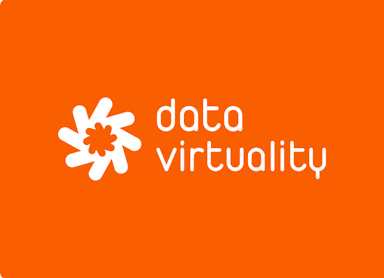
How to Simplify Evidence Collection for Multi-Framework Compliance
Emily Bonnie
Senior Content Marketing Manager
Rob Gutierrez
Senior Cybersecurity and Compliance Manager, CISA, CCSK, CMMC RP
If you've ever managed a security audit, you know the drill: dig through screenshots, track down logs, export reports, organize documentation, repeat. Now multiply that effort across several security frameworks, and you’ve got a full-time job just collecting evidence.
Most companies still treat evidence collection as a manual, framework-by-framework process. The reality is that many security frameworks have significant control overlap, and with the right strategy and tools, you can drastically reduce the time, effort, and frustration involved.
Let’s walk through practical ways to simplify evidence collection for multi-framework compliance and build a system that scales with you.
The challenges of manual evidence collection
One of the biggest challenges with evidence collection is that every security framework defines requirements in its own way, even when the underlying control is essentially the same. For example, access management may be a shared expectation across frameworks, but the exact language, scope, or supporting documentation can differ.
On top of that, individual auditors may request evidence in specific formats. One might want a signed report, another a CSV export, another a screenshot. These variations in both requirement details and formatting expectations can create logistical headaches.
Adding to this complexity is the fact that frameworks often require evidence to be collected on different timelines. Some controls must be reviewed quarterly, others annually, and some continuously. Without a system to track collection cadences, teams often fall back on ad-hoc tools like spreadsheets or shared calendars. Over time, this increases the risk of outdated evidence, missed deadlines, and audit surprises, especially as the number of frameworks grows.
Version control is another common pain point. When evidence is scattered across folders, email threads, or personal devices, it becomes difficult to track whether a piece of evidence is current, complete, or even valid. This lack of centralized oversight puts audits at risk and makes it harder to maintain a clear record of compliance over time.
This burden only grows for organizations working across global markets or highly regulated sectors like SaaS, fintech, healthcare, and government contracting. These companies are often required to demonstrate compliance with at least six security or regulatory frameworks, such as SOC 2, ISO 27001, NIST CSF 2.0, and GDPR. Without a way to consolidate overlapping controls, the effort required to prove compliance compounds exponentially.
Recommended reading

The Ultimate Guide to Managing Multi-Framework Compliance: Best Practices & Strategies
Control mapping: Do once, use many
One of the biggest sources of wasted effort in compliance is collecting the same evidence multiple times for slightly different requirements. Most frameworks share core control themes like access management, personnel training, and incident response, but they use different terminology and structures. Without a way to align framework requirements, teams end up duplicating work that could be done once.
Control mapping solves this by identifying where one internal control satisfies requirements across multiple frameworks. For instance, periodic access reviews may be required for SOC 2 (CC6.1), ISO 27001 (A.9.2.5), HIPAA (164.308(a)(4)), NIST 800-53 (AC-2(7)), NIST 800-171 (3.1.6), and PCI DSS (7.2.5). Rather than documenting and uploading separate evidence for each, you can link a single piece of evidence to all six framework requirements.
Of course, control mapping isn’t always straightforward. One framework might reference "logical access controls," while another describes "access restriction based on business requirements." A formal control mapping strategy helps clarify these differences and ensures your team understands how each internal process aligns with compliance requirements.
To implement this effectively, you need a control library. This is a central list of your internal controls, each linked to the relevant requirements across the frameworks that apply to your organization. Instead of managing each framework in isolation, your team can work from a single system. Evidence like an access review or risk assessment can be uploaded once and automatically applied to all mapped controls.
Many compliance automation platforms include built-in control mapping libraries that make this process much easier. Some, like Secureframe, even provide pre-mapped frameworks out of the box, allowing you to focus on collecting evidence rather than decoding how standards overlap.
These tools eliminate much of the manual effort involved in building and maintaining your own crosswalks. Organizations that use a unified control library can reuse evidence for up to 80–90% of overlapping controls across frameworks like SOC 2, ISO 27001, HIPAA, and PCI DSS. That level of efficiency can save weeks of work for each audit and keep your compliance program lean, consistent, and audit-ready year-round.
Recommended reading

Control Mapping: What It Is & How It Can Help Simplify Your Compliance Efforts
Tag and categorize evidence for multi-use
Once controls are mapped across frameworks, the next step is to manage the supporting evidence in a way that’s easy to access, track, and report on. Evidence tagging and categorization isn’t about defining which compliance requirements each control maps to, it’s about making sure the right evidence is easy to find, use, and verify when audit season comes around.
Each document, screenshot, export, or report should be clearly tagged with:
- Which controls it supports
- Which frameworks it applies to
- Where it came from
- When it was collected
- How often it should be reviewed
- How long it needs to be retained
With this information in place, your team can quickly retrieve what they need without chasing down document owners or sifting through folders.
Tagging also helps streamline audit preparation. If you are preparing for your ISO 27001 recertification, you can filter by that framework and quickly generate a targeted evidence package for your auditor. The same applies if a specific team or business unit requests documentation for an internal security audit. Ultimately, tagging and categorizing evidence makes your compliance program more efficient, more scalable, and easier to maintain over time.
Automate evidence collection wherever possible
Manually collecting evidence may work when you’re managing a single framework, but it quickly becomes unmanageable as your compliance obligations grow. Automation eliminates much of that friction by continuously monitoring your compliance posture and pulling control evidence from the tools and platforms your team already uses.
Tools like Secureframe integrate with most audit relevant systems including AWS, Azure, GCP, Okta, Google Workspace, Jira, and vulnerability management tools to automatically gather security configurations, access logs, ticket history, and more evidence. Rather than taking screenshots or chasing down PDFs, your compliance platform can access controls and evidence that’s linked directly to framework requirements in real time.
The benefit here isn’t just speed, it’s also consistency. Automating evidence collection ensures that documentation is always current, formatted correctly, and tied to the right controls. This helps eliminate versioning issues, prevents gaps in your audit trail, and builds trust with auditors, who can see that your evidence is generated directly from source systems.
It also supports continuous control monitoring, which is becoming a core expectation in modern compliance programs and frameworks. Instead of waiting for an audit to check whether your security controls are in compliance, automation allows you to monitor key indicators on an ongoing basis and take corrective action early if something’s off.
The core value of automation isn’t just faster evidence collection, its proactive compliance. By continuously syncing data from your cloud environment, ticketing system, and IAM platform, you’re in a better state of audit readiness. Your team avoids the high-pressure sprints leading up to audits, and you’re better positioned to take on new compliance frameworks or customer requirements without scrambling to retrofit documentation.

Recommended reading

A Guide to Automated Evidence Collection for Compliance
Build a scalable, repeatable process
To avoid scrambling at audit time, it’s important to treat evidence collection as a continuous process, not a one-time task. That starts with setting a clear timeline and cadence for every control and piece of evidence, based on how often each type of evidence needs to be reviewed or updated.
Some documentation, like security policies or periodic risk assessments, may only require annual reviews. Others, like access logs, vulnerability scans, or employee onboarding/offboarding records, should be reviewed monthly or quarterly. By defining these cadences up front, you ensure that evidence is always up-to-date and audit-ready.
Next, assign clear ownership for each control or evidence category. Someone should be responsible for uploading the right artifact, checking that it’s current, and verifying that it meets the auditor’s expectations. When responsibilities are shared or unclear, things tend to fall through the cracks.
Finally, automate reminders or workflows wherever possible. If your team knows when to upload evidence and what’s expected, you’ll avoid last-minute scrambles and reduce overall audit fatigue.
Automation platforms can also help operationalize this process by assigning tasks, sending reminders, and automatically collecting evidence for relevant frameworks. For lean teams managing multiple audits, this kind of centralized workflow can eliminate hundreds of hours of manual work while keeping efforts organized and on track.
Recommended reading

How Data Virtuality Accelerated Multi-Framework Compliance and Client Security Evaluations to Close Deals Faster
Take the chaos out of multi-framework compliance
Multi-framework compliance doesn’t have to mean double (or triple) the work. The key is to stop treating evidence collection as a disconnected series of manual tasks and start building a system that supports your team and scales with your compliance needs. When you align your efforts around a shared control library, automate what can be automated, and clearly organize evidence, you create a foundation that’s efficient, consistent, and always ready for your next audit.
Secureframe is designed to streamline the process of achieving and maintaining multi-framework compliance, significantly reducing the complexity and effort involved while ensuring a strong security posture.
Arbor Education was able to reduce their audit prep time by over 66%. After struggling with manual evidence collection and a six-week audit readiness cycle, the team adopted Secureframe to scale their compliance program across multiple business units and frameworks, including ISO 27001, ISO 9001, PCI DSS, and GDPR. With centralized control mapping, automated evidence collection, and real-time visibility, they reduced their audit prep time to just two weeks and now operate in a state of continuous readiness.
Secureframe simplifies and scales multi-framework compliance with:
- Centralized compliance management: Track and manage all requirements, controls, and documentation across 40+ frameworks like SOC 2, ISO 27001, and GDPR in one place.
- Control mapping and crosswalks: Reuse evidence across frameworks with mapped common controls that minimize duplicate work.
- Continuous monitoring and alerts: Get real-time insights into your compliance posture and control health.
- Automated evidence collection: Eliminate manual documentation tasks and keep audit artifacts up to date.
- Simplified regulatory change management: Stay aligned with evolving requirements through built-in updates.
- Expert support: Work with our team of 30+ compliance experts and former auditors to streamline your compliance journey.
88% of Secureframe users say the platform helped them speed up time to compliance for multiple frameworks. Schedule a demo to see how Secureframe can help your team save time, reduce audit fatigue, and scale your compliance program.
Use trust to accelerate growth
FAQs
What is the collection of audit evidence?
The process of gathering documentation, records, and other artifacts that demonstrate whether an organization’s security controls are designed and operating effectively. This evidence supports the auditor’s assessment of compliance with a given standard or framework.
How can audit evidence be gathered?
Audit evidence can be gathered through observation, document review, interviews, system access, automated integrations, and testing. Evidence should be timely, relevant, and sufficient to demonstrate that controls are implemented and functioning as intended.
What is SOC 2 evidence collection?
SOC 2 evidence collection involves gathering proof that your organization’s controls meet the applicable Trust Services Criteria (TSC). This includes access logs, policy documents, security configurations, change management records, and other evidence that supports your SOC 2 control environment.
What are the three methods of collecting audit evidence?
The three common methods of collecting audit evidence are:
- Inspection: Reviewing documents, configurations, and records.
- Observation: Watching processes or procedures in real time.
- Inquiry and confirmation: Asking stakeholders questions and obtaining written or verbal confirmation of control activities.
How does an auditor know when they have collected a sufficient amount of audit evidence?
An auditor determines sufficiency based on the risk associated with the control, the quality and reliability of the evidence, and the audit objective. Evidence must be persuasive enough to reasonably support a conclusion. If evidence is incomplete, inconsistent, or lacks objectivity, more may be required.

Emily Bonnie
Senior Content Marketing Manager
Emily Bonnie is a seasoned digital marketing strategist with over ten years of experience creating content that attracts, engages, and converts for leading SaaS companies. At Secureframe, she helps demystify complex governance, risk, and compliance (GRC) topics, turning technical frameworks and regulations into accessible, actionable guidance. Her work aims to empower organizations of all sizes to strengthen their security posture, streamline compliance, and build lasting trust with customers.

Rob Gutierrez
Senior Cybersecurity and Compliance Manager, CISA, CCSK, CMMC RP
Rob Gutierrez is an information security leader with nearly a decade of experience in GRC, IT audit, cybersecurity, FedRAMP, cloud, and supply chain assessments. As a former auditor and security consultant, Rob performed and managed CMMC, FedRAMP, FISMA, and other security and regulatory audits. At Secureframe, he’s helped hundreds of customers achieve compliance with federal and commercial frameworks, including NIST 800-171, NIST 800-53, FedRAMP, CMMC, SOC 2, and ISO 27001.